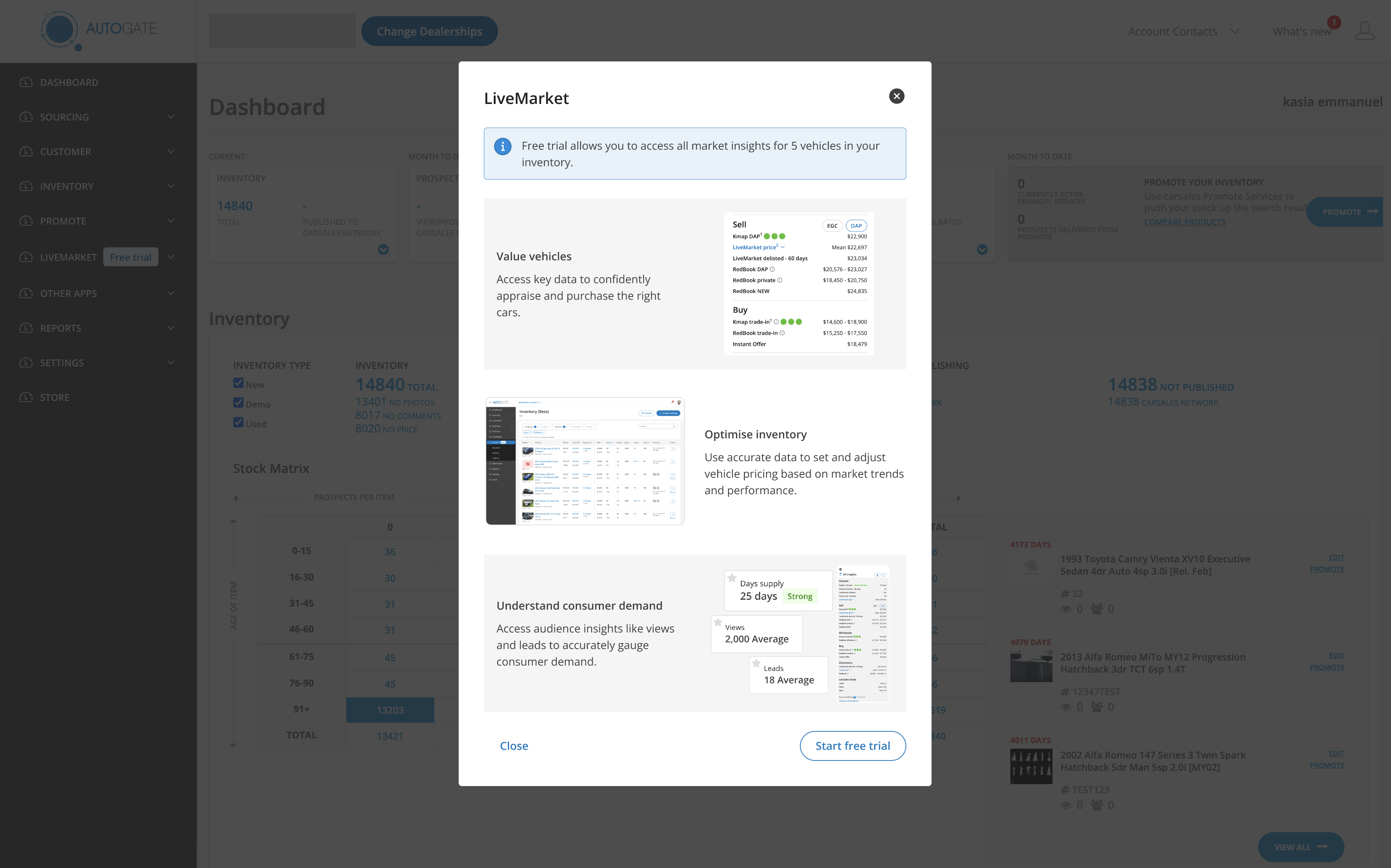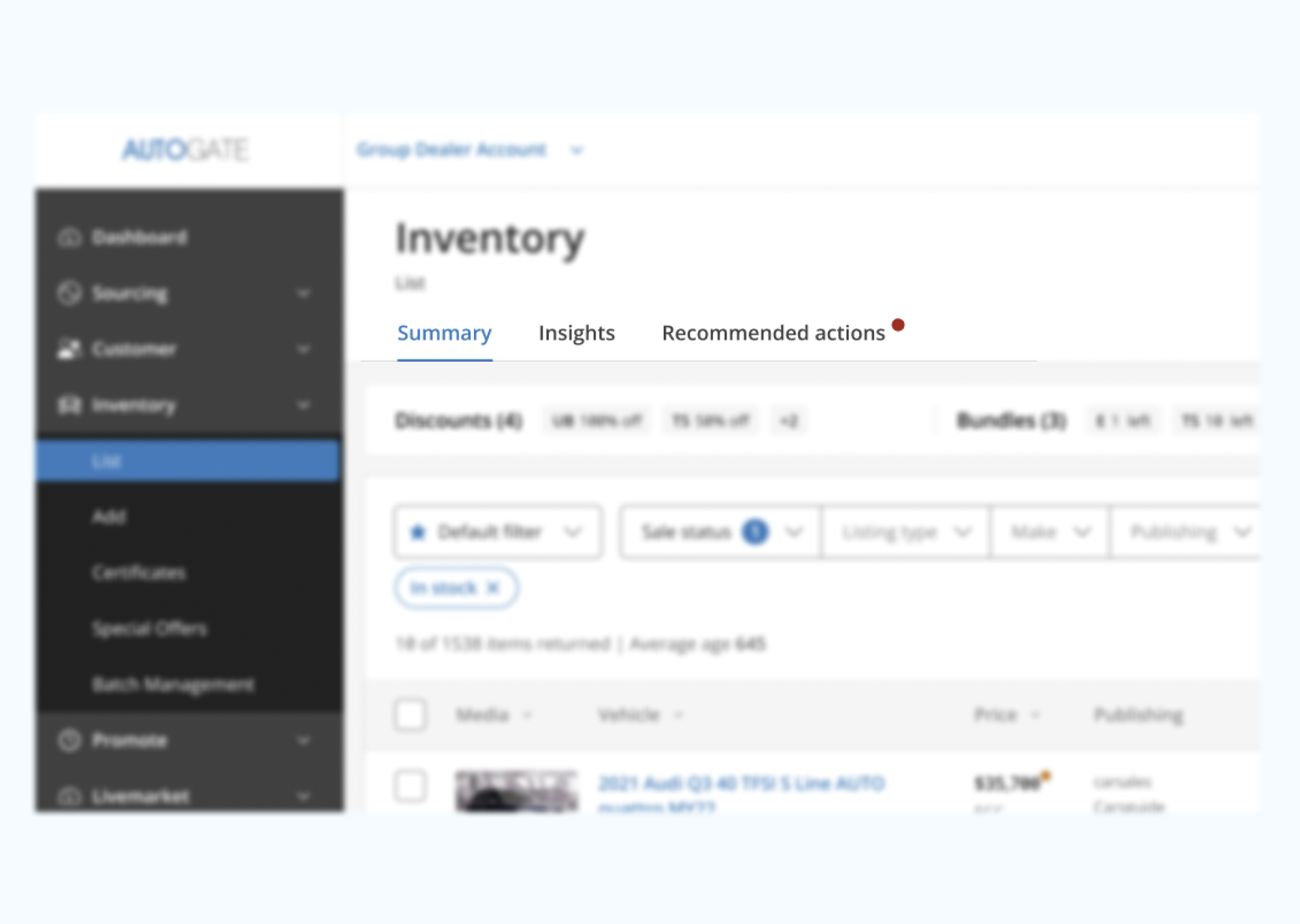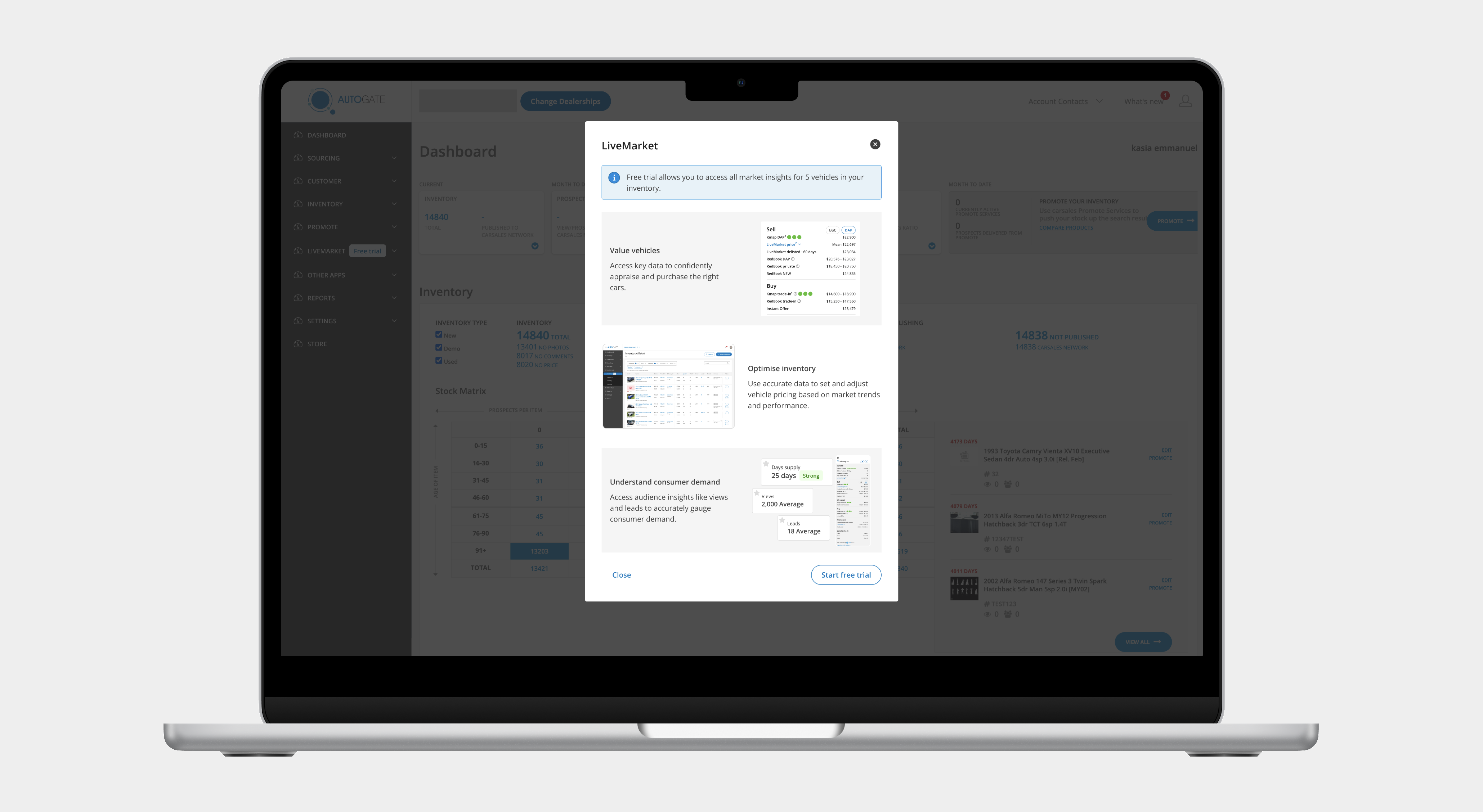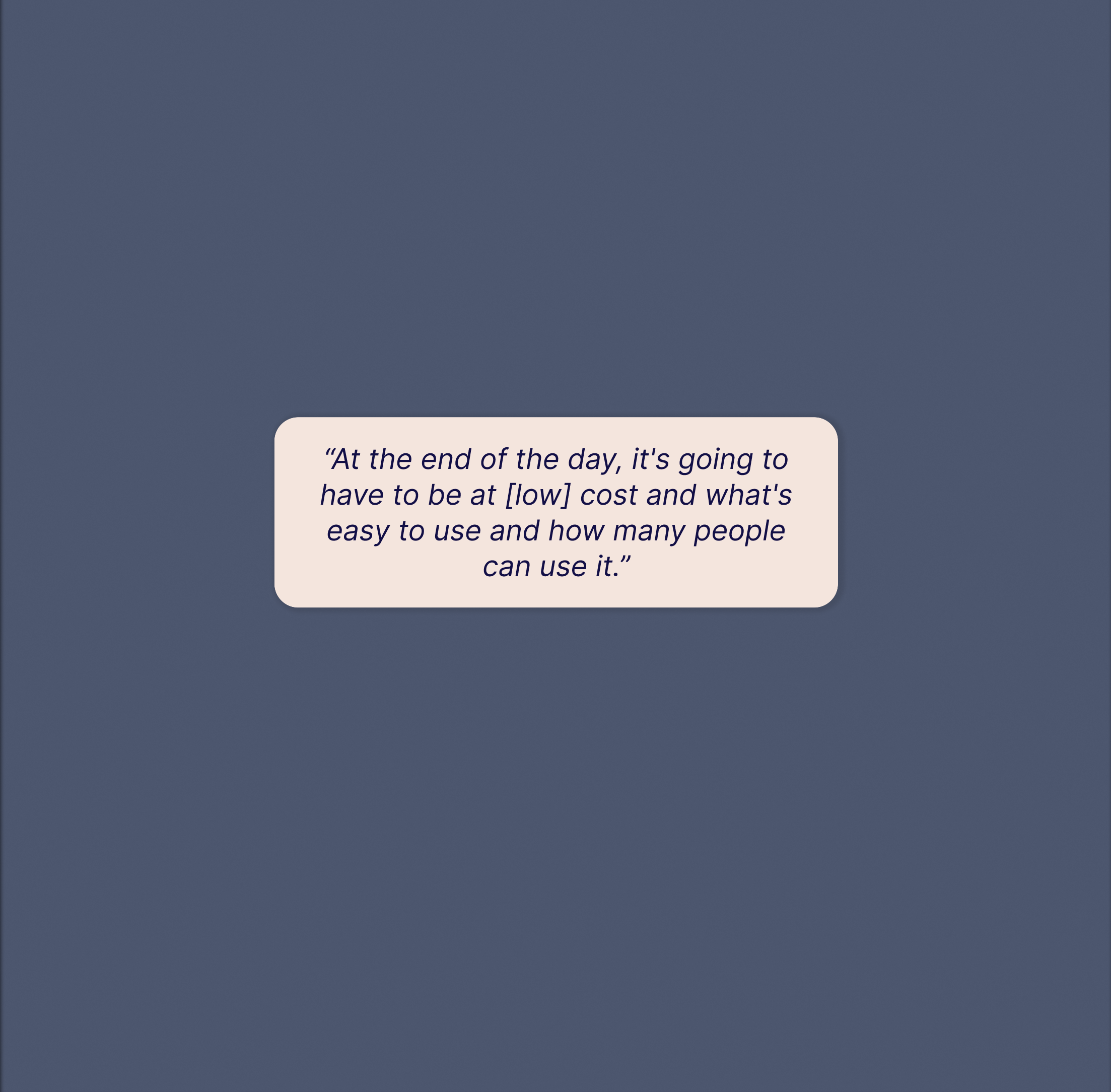
Summary
Context
AutoGate is a B2B platform for car dealers. Dealers pay a monthly subscription for full access to LiveMarket — a suite of data and insights about their inventory. They can also trial LiveMarket through a 30-day free trial in the AutoGate store, though this still requires several steps to activate.
The business wanted to:
- Prepare for a future tiered subscription model, where access to insights could be scaled by tier.
- Explore how to make trials lighter and easier — allowing dealers to experience value quickly without committing to a full 30-day trial.
This was my first project in the B2B space, after several years of designing consumer-facing products. It challenged me to adapt my approach to an audience with highly pragmatic needs and little tolerance for wasted time.
My role and approach
Role: Product designer, working closely with the product manager.
Scope: Explore trial design concepts, run user research, and extract insights to guide both near-term trial designs and long-term subscription strategy.
Approach:
- Defined research objectives and hypotheses with the PM.
- Designed two trial concepts to test.
- Conducted dealer interviews (external) and stakeholder interviews (internal, dealer-facing teams) to gather insights.
- Synthesised findings into insights with clear implications for product and business strategy.
Impact
Although the project was paused due to shifting business priorities, the work provided:
provide value quickly,
simplify data

Process
Research objectives
We set out to answer three key questions:
- What stops dealers from subscribing to LiveMarket?
- Which trial concept better showcases the value of LiveMarket during a short trial period?
- Which concept is most likely to encourage upgrades?
Concepts we tested
- Concept A: Full access to insights, but limited to 5 cars.
- Concept B: Access to 5 individual insights/data points; upgrade required for more.
- Both aimed to:
- Deliver quick value in under a minute.
- Showcase the “power” of insights without overwhelming.
- Create natural upgrade points.


Insights and findings
Friction isn't the only barrier
- Making the trial easier won’t automatically drive upgrades.
- Key blockers:
- Limited market view (dealers want data beyond carsales.com.au).
- Perceived cost relative to value.

Dealers want actionable intelligence,
not just data
- Insights alone feel passive and are "just data".
- Tools that guide decisions and flag actions (e.g. stock issues, pricing suggestions) are far more compelling.
- This aligns with the expectations of next-gen users, who look for faster, smarter workflows.

Concept evaluation
- Concept 2 (full insights on 5 cars) showed stronger potential.
- Dealers could better see how LiveMarket might influence pricing and listing decisions.
- But: the 5-car limit wasn’t enough to learn how to use the data and understand long-term impact.
Experience matters
- The way LiveMarket presents information today can feel jarring to new users.
- A trial must be intuitive, require minimal onboarding and support quick learning.

Results and next steps
The initiative was paused after research due to shifting business priorities. Still, the work established:
- clear principles for trial design (clear onboarding flow, provide value quickly, respect dealer time);
- strategic direction for future LiveMarket evolution.
What the future work should address:
- A successful trial isn’t only about lowering friction — it must also showcase meaningful value quickly.
- For longer-term competitiveness, LiveMarket should evolve from a reporting tool into a decision-guiding system.
- The trial design should balance “teaser” limits with enough substance to prove value.
- Future iterations should explore redesigning LiveMarket’s experience so new users grasp its value fast.


What I learned
Expanding range
This was my first project in the B2B space. Coming from a background in consumer product design, I had to quickly recalibrate and design for a different mindset. It broadened my range as a designer, proving I can create value in both consumer and business contexts.
Designing for first impressions
I saw how critical the entry experience is in shaping perceptions of value. This reinforced the importance of crafting intuitive, lightweight entry points in complex products.
End users vs decision-makers
The people who use a product every day aren’t always the ones who decide whether to pay for it. That means design has to operate on two levels: creating an intuitive, valuable tool for daily users, while also making its business impact clear to those holding the budget.




